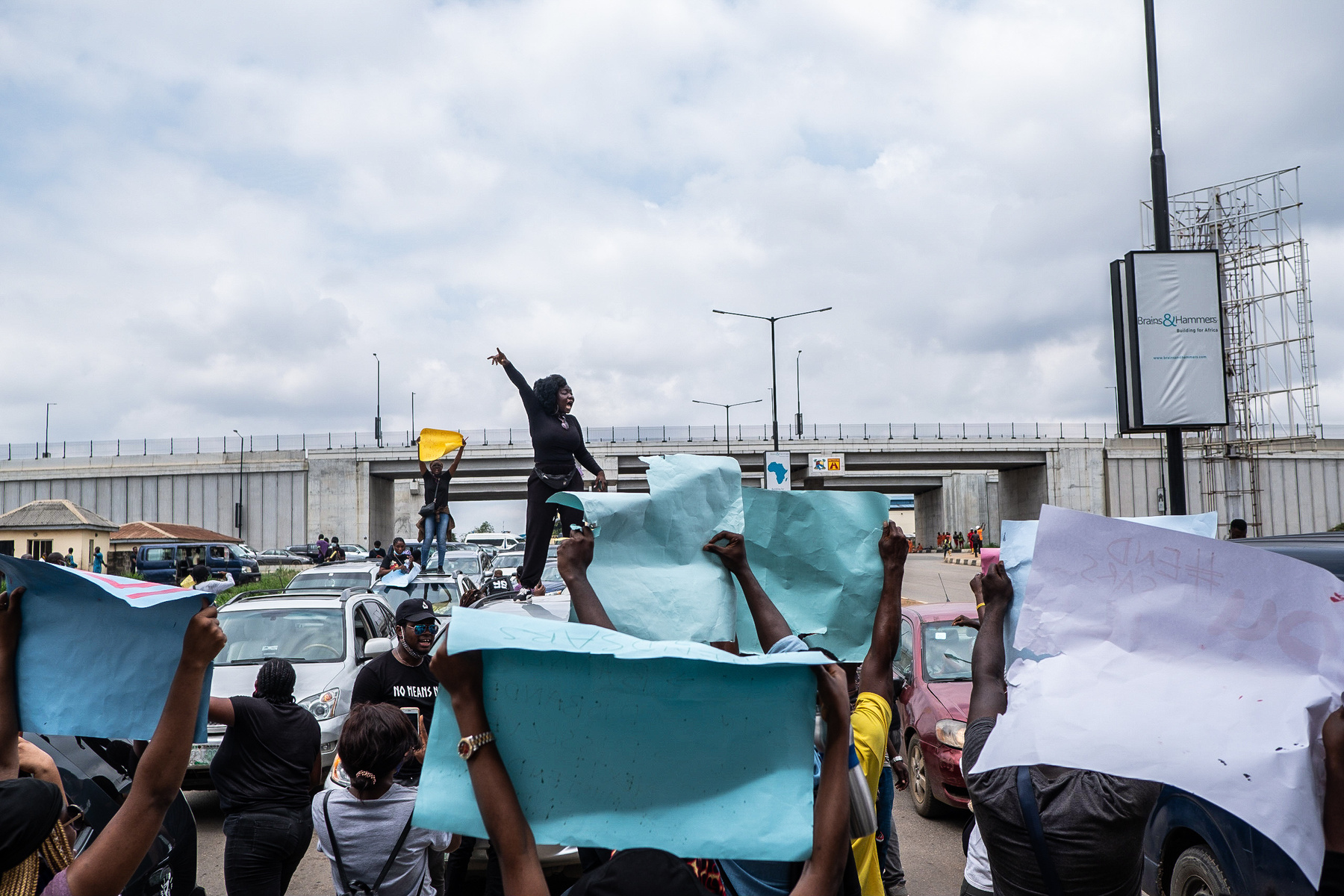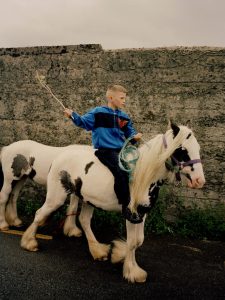
The artists are attuned to the question: How do you photograph something that won’t stay still? Their images capture Lagos in constant flux, where the hustle and effort of millions of people trying to eke out an existence thwart any desire for stillness or contemplation. The city as an ever-hungry beast; indefatigable.
Several photographs carry a sociological impulse. For example, Iheme’s image of Makoko, a floating settlement across the Third Mainland Bridge built on stilts inside Lagos Lagoon. Emezie’s images of the 2020 EndSARS protests are notable because she refuses to obey the separation of photographer from subject – she is on the streets, rejecting the passivity of observation. Photography itself becomes a form of protest.
These works also suggest that it is not enough to visualise Lagos; the city cannot be held in a neat frame. The place must be felt too, its sensory overload reckoned with: from the honking horns, the rising smoke, the brash call of strangers, men arguing, someone stealing food to the sound of money exchanging hands. All are transmuted in their rapturous intensity in this careful selection.
New Photography 2023 delineates the myriad techniques artists use to capture the city, from the layering of archival photographs to create composite images, to pictures that take us into Lagos’ abandoned and neglected spaces. Images play a key role in the construction of the city – keeping its myths alive. To these artists, photography is not merely a recording of our surroundings, it is the means through which fragmented experiences are brought to light for collective understanding.




